Recycling Behind-the-Scenes: Audit Shows Materials Collected on Three Routes in a Single Day
March 7, 2024 |
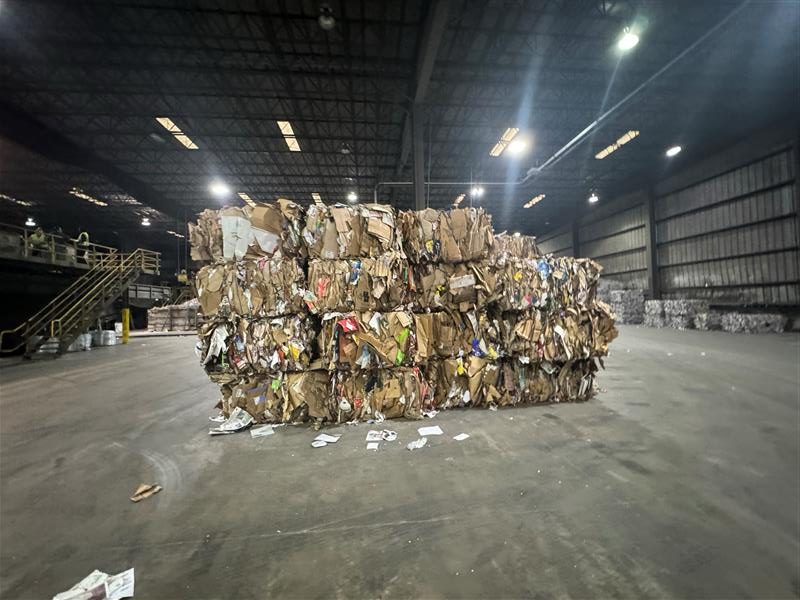
As the CVWMA Recycling Coordinator, part of my job is to keep up with what Central Virginians are throwing in their recycling carts. One way to do this is to observe occasional recycling audits at the material recovery facility (aka “the MRF”). This is the place where everything from your cart goes once it’s collected.
On Feb. 23, 2024, I headed down to Chester, Virginia, to observe one of these audits. If you’re interested in what I saw, keep reading!
A little background
Periodic monitoring is an important tool that keeps CVWMA’s recycling programs running smoothly. Not only does it help ensure material is being collected and recycled properly, it also lets us see where contamination (items that are not recyclable curbside) is occurring and where we need to direct education efforts.
Our curbside recycling contract with TFC Recycling gives us access to observe sorting operations at the company’s material recovery facility in Chester. Everything collected in CVWMA’s residential recycling program goes to this facility to be sorted and prepared for buyers.
A privately owned recycling company, TFC performs routine audits to assess the mix of materials it collects and sells on the various recycled commodity markets.
Sorting before sunrise
On the day of the audit, TFC staff got started around 4:30 a.m. They were processing only material that came in the previous day from Red Thursday routes in Richmond, Henrico and Hopewell. These routes were selected as a representative sample of the region, covering both urban and suburban areas (an audit had been conducted the previous week on Blue Thursday routes in Richmond, Henrico and Hanover).
The Red Thursday load had been left untouched until that morning so that no outside materials would skew the results.
From the giant heap on the tipping floor, material was placed a little at a time into the sorting machines. At this MRF, both machines and people do the sorting. Cardboard, plastics, glass, paper, and aluminum and steel cans wind their way through a series of quick-moving conveyer belts as employees further sort by hand. You can watch a video of this entire process on our website. An industrial-size baler bales the material by commodity, and each is weighed and tagged.
The audit took about three hours to process 26,820 pounds (13.4 tons).
Audit results
This is what was processed from three routes collected on one day:
- 5 bales of cardboard (3.78 tons)
- 3 bales of mixed paper (1.96 tons)
- 4 bales of plastics (.86 tons)
- 2 bales of aluminum cans (.2 tons)
- 2 bales of steel cans (.3 tons)
- 2.7 tons of glass bottles and jars
- 3.42 tons of trash
Here are some pictures of what I saw:

This small bale of aluminum cans weighed 440 pounds.
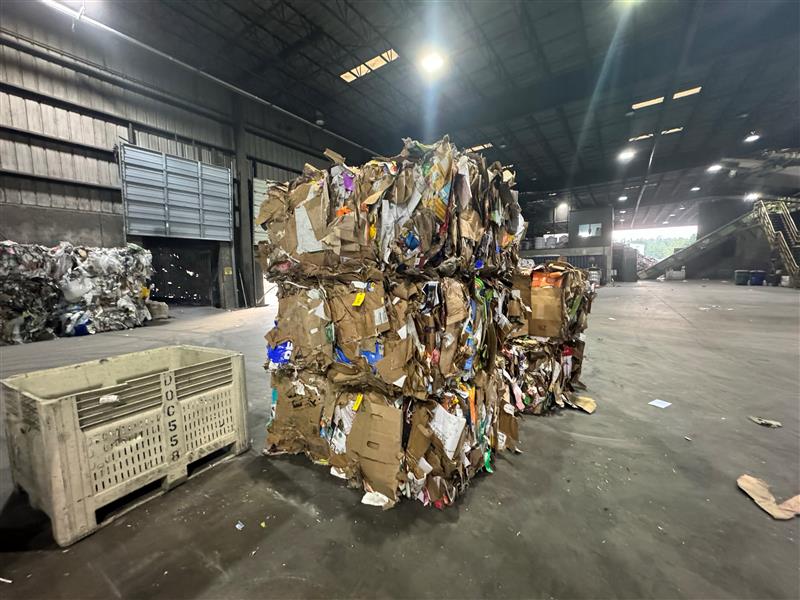
Cardboard, referred to as “Old Corrugated Cardboard” in recycling lingo.
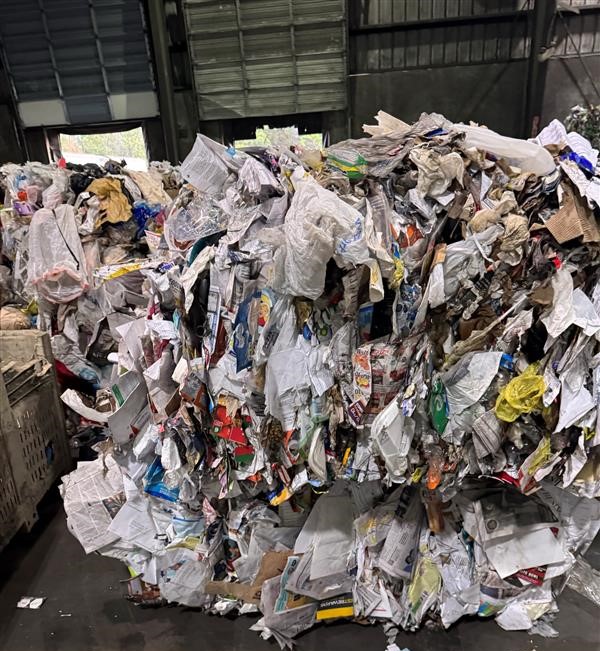
Mixed paper, which includes newsprint, office paper, junk mail and magazines.
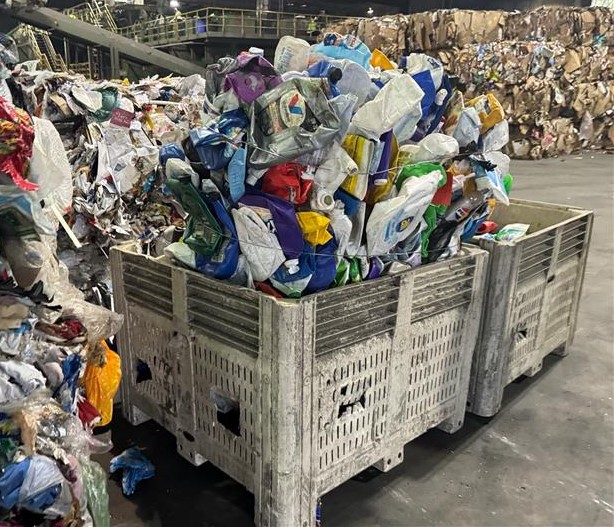
#2 plastic containers. Each type of plastic is baled separately.
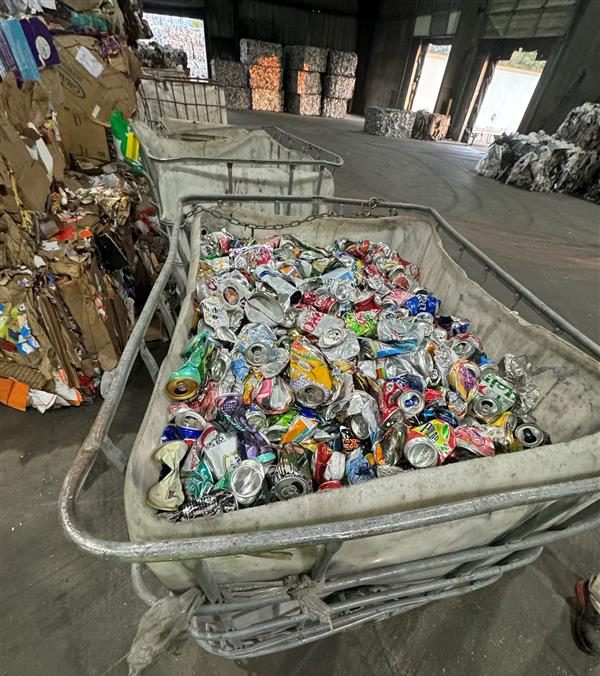
More aluminum cans.
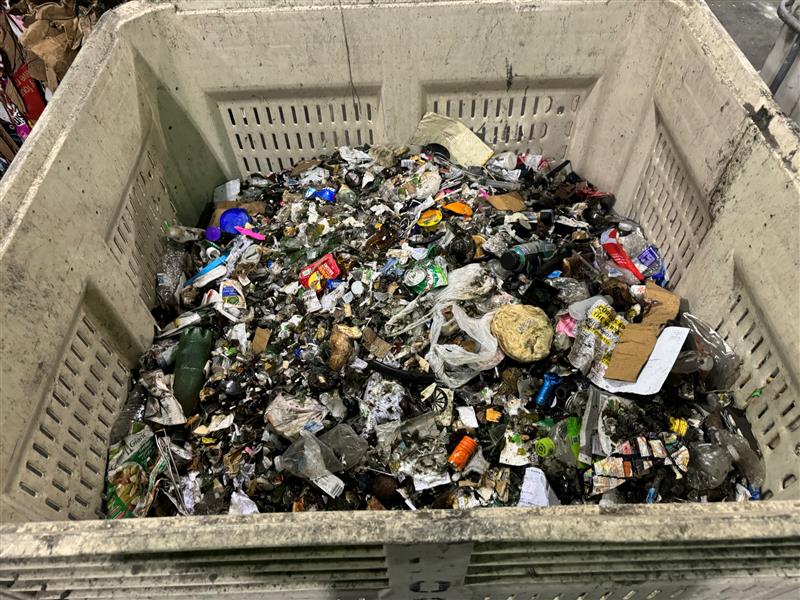
Glass isn’t baled but goes in a container to a glass processor. There, it will be further sorted and cleaned for recycling.

Contamination in the recycling stream: 1,320 pounds of trash, or “residue” was pulled out of the recycling during this audit. It consisted mostly of plastic bags, which are not accepted in CVWMA recycling. Plastic bags can damage equipment at the facility.
A note about trash
Trash doesn’t belong in recycling. Too much trash in a recycling load can cause the entire load to be landfilled. We call this contamination. This is why people must recycle right and avoid “wish-cycling,” or the act of placing non-accepted items in their recycling container.
At the Chester MRF, employees remove a lot of trash, or “residue” as it is called in the recycling world, by hand as it speeds by on the conveyor system. Trash is baled separately and hauled to a landfill. Unfortunately, this can add time and cost into the overall recycling process.
We can see the most common items improperly placed in recycling are plastic bags. Plastic bags can be returned to many retail locations where they are recycled in a special program. Never place plastic bags in recycling containers.
Final report
A few days later, we received the final report detailing the mix of materials. Cardboard and paper make up the highest percentage of material by weight, followed by glass, trash, plastic and aluminum and steel. Most importantly our residue rate remains below 20% which indicates that we have a strong program full of people recycling right.
While I’ve taken many trips to the MRF, this one was particularly interesting. Hundreds of tons are sorted through the facility every single day, so you rarely get to see the end product of a few routes so clearly.
Working together with our contractor TFC on routine audits like this allows us to serve the region more effectively and communicate with you on what’s happening with your recycling.
Tags: nextrex, plastic bags, recycle right, recycling, recycling contamination, sorting, trex, virginiaCategory: News
